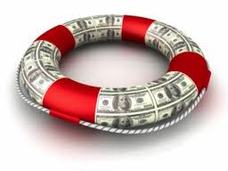
There are two primary alternatives:
1) to just not take as much risk in the first place, managing risk not by trying to shift market risk to an insurance company, but just owning less risky stuff in the first place (i.e., having a more conservative portfolio); or
2) by simply spending conservatively enough that even if "bad stuff" happens in the portfolio, the retiree who in the end is only spending a few percent a year from the portfolio can allow the bulk of the assets to stay invested long enough for a recovery to occur.
After all, it's quite notable that in the end, this kind of safe withdrawal rate approach survived a Great Depression that many insurance companies did not, and those following a safe withdrawal rate approach since 2008 are doing fine (given the stupendous market rally that has occurred since the decline) while a large number of insurance companies had to permanently exit the marketplace.
In other words, notwithstanding how scary the ride can be at the time, the reality seems to be that just prudently managing a portfolio and drawing a conservative amount from it each year has had more success withstanding bear markets, economic turmoil, and "black swans" than the insurance companies some investors are looking to for protection. To be fair, not all insurance companies have left the business since 2008, and none have actually outright defaulted on their guarantees at this point. But we have seen a number of very consumer-unfriendly practices from insurance companies trying to get off the hook for their guarantees, from "buy-backs" to changing available investment options and constraining asset allocations and more, and we still don't know how the next bear market will play out either.

 RSS Feed
RSS Feed
